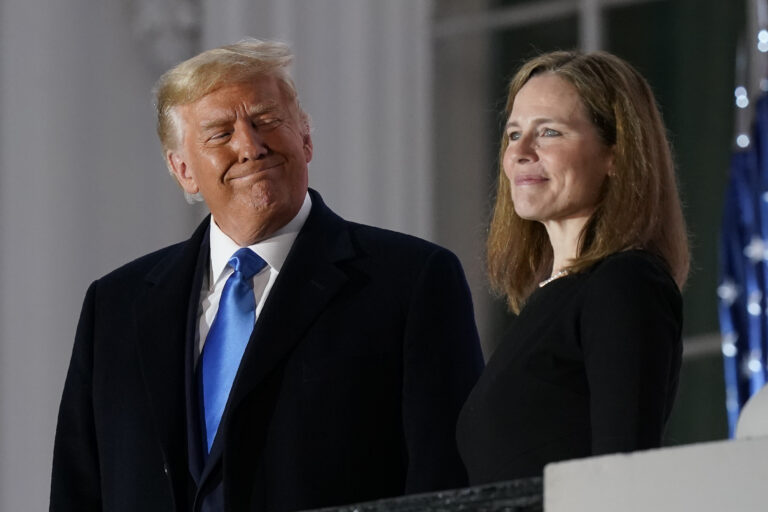One of these days, Amy Coney Barrett will cast a vote that doesn’t kill people

I have a piece up about the Supreme Court throwing out New York COVID measures on free exercise grounds even though the order treated religious institutions more favorably than comparable secular ones:
The Supreme Court had already rejected two free exercise challenges to COVID-19 restrictions, but the death of Justice Ruth Bader Ginsburg and her last-minute replacement by new Justice Amy Coney Barrett has already had a life-or-death impact on the Court. In an unsigned opinion, a bare 5-4 majority of the Court prevented Cuomo from enforcing either the 10- or 25-person limit on houses of worship, and clearly indicated it would find them unconstitutional should an appeal on the merits reach them. Because, according to the Court, the regulations “single out houses of worship for especially harsh treatment,” they do not satisfy the First Amendment’s requirement that the state remain impartial between religious and secular institutions.
The majority is correct that religious institutions cannot be subject to harsher restrictions than comparable secular ones, unless the state has a highly compelling reason to do so. The problem with the majority’s conclusion, however, is that not only are houses of worship not treated more harshly than comparable secular institutions, they are actually treated less harshly. In red zones, gatherings of people who do not share the same residence are forbidden, whether inside or outside the house, and in orange zones such gatherings are limited to 10 people. Reflecting the particular importance of religion to society, Cuomo’s order gives more leeway to religious institutions than similarly situated secular ones such as a book club or grassroots political activist organization.
The majority’s conclusion that religious institutions are actually being treated more harshly is based on the common tendency across the ideological spectrum to evaluate COVID-19 restrictions according to moral intuition rather than epidemiological risk. In a sneering concurrence dripping with unearned contempt, Trump appointee Neil Gorsuch asserted that according to Cuomo’s order “it may be unsafe to go to church, but it is always fine to pick up another bottle of wine, shop for a new bike, or spend the afternoon exploring your distal points and meridians.” But there are perfectly sound reasons for treating liquor stores and bicycle shops differently than houses of worship that do not require an assumption that being able to buy a bottle of bourbon is more important than being able to collectively express one’s religious faith.
Cuomo’s order is, in fact, much more consistent with the scientific evidence than Gorsuch’s specious comparisons suggest. As Justice Sonia Sotomayor observed in her quietly devastating dissenting opinion, Gorsuch did “not even try to square his examples with the conditions medical experts tell us facilitate the spread of COVID–19: large groups of people gathering, speaking, and singing in close proximity indoors for extended periods of time.” Cuomo’s order does not reflect a belief that being able to buy hardware or alcohol is more important than spiritual worship; it reflects the basic fact that people generally do not linger in hardware or liquor stores in static proximity to other people for long periods of time, occasionally breaking into song, and hence can patronize these establishments more safely.
This is not to say that Cuomo’s choices are beyond dispute. The majority opinion and the dissenting opinion by Chief Justice Roberts (who declined to vote to issue an injunction because the challenged orders were no longer in effect) make a reasonable case that the maximum occupancy standards should be made more flexible to accommodate places of worship with larger amounts of available seating. But it is not reasonable to expect all emergency measures to be tailored with perfect precision, and such tailoring is not the Supreme Court’s job. The court has no business second-guessing the orders of elected officials without clear evidence that a policy involves religious discrimination, and the idea that Cuomo’s order was motivated by anti-Catholic animus rather than public health concerns is frankly preposterous. (Wait until he finds out about New York’s proudly Roman Catholic governor!)
At least Barrett’s votes to grease the wheels of Bill Barr’s arbitrary execution machine were superfluous!
The scariest part of this decision is that it’s an indication that there are 5 Supreme Court justices who consider the Fuller Court too left-wing.


